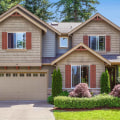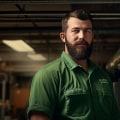In other words, your central air conditioning system is independent of your furnace. The outdoor unit is not connected to the oven at all, but both use the same distribution system (ventilation grilles, chambers and ducts) to circulate cold air to the house. As our Norwood furnace repair customers like to say, they can think of their boiler and air conditioner as two stores, side by side on the same street. Both workshops use the road to make deliveries, but they are still independent companies.One store can be open even when the other is closed.
The same goes for the boiler and the air conditioner. These systems use the same ventilation grilles, but other than that, they don't depend on each other. If you use both systems at the same time to get the air circulating, it's a sign that there are serious problems.The term forced air can only refer to an oven or heat pump if it uses ducts.
Central air conditioning
uses the supply system of a forced air heating system to supply air conditioning.Both the boiler and the air conditioner use the same ducts, so problems with the ventilation grilles could cause problems in either system. Like any appliance in your home, your heating and air conditioning system will eventually need to be replaced.Both the air conditioner and the boiler are parts of the air conditioning system, which stands for heating, ventilation and air conditioning. In the central heating system, heat is produced in a central location and then distributed throughout the house. The outdoor unit is not connected to the oven at all, but both use the same distribution system (ventilation grilles, fans, filters and ducts) to introduce hot and cold air into the house.
On the other hand, a forced air system refers to any HVAC system that uses air ducts and ventilation grilles to circulate temperature-controlled air to your home or building.
Most of the time, forced air belongs to the heating system, while central air refers to the cooling system.
A central air system has a variety of components, such as condensers, compressors, fans, and evaporator coils. From air conditioners, heat pumps, and ovens, learn which one might be best for your home's unique needs. These systems perform opposite functions, either to cool or heat your home, but both use the vents and ducts of your heating, ventilation and air conditioning system to carry air throughout the house. The boiler and the air conditioning system are two central components of the air conditioning system, connected and controlled for greater efficiency.During summertime, you should turn down (or turn off) any humidifier connected to your oven since one of the functions of your air conditioning unit is to dehumidify the air.The parts of the heating, ventilation, and air conditioning system work differently depending on how they send air throughout your house. However, if your home has an existing duct system you may need to continue using central air conditioning.You have an option between forced air and central air when it comes time to purchase new HVAC equipment.In conclusion, central air conditioning does not require a furnace but both systems use a common distribution network for circulating hot or cold air into your home or building. Forced air systems refer to any HVAC system that uses ducts and ventilation grilles while central air refers to cooling systems with components such as condensers, compressors, fans and evaporator coils. Most of the time forced air belongs to heating systems while central air belongs to cooling systems.


